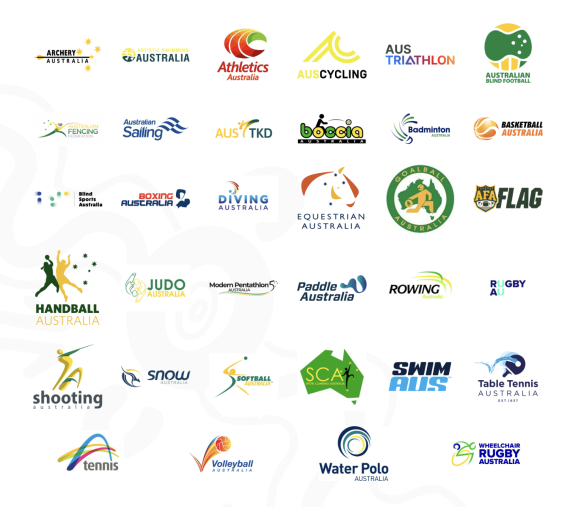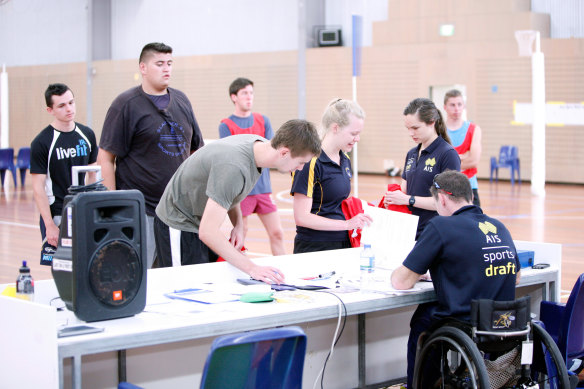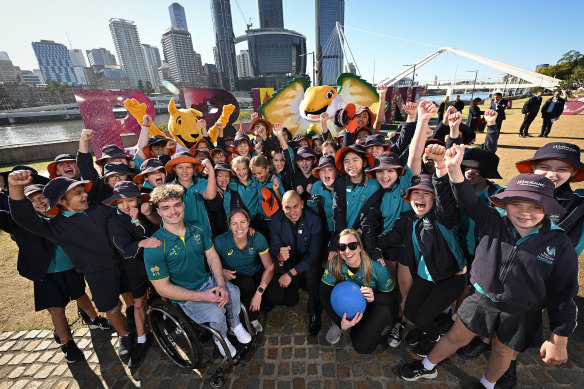This was published 9 months ago
AIS kicks off biggest talent search in Australian sporting history ahead of Brisbane 2032
By Tom Decent
The biggest talent search in Australian sporting history will spearhead an ambitious push to make the 2032 Brisbane Olympics and Paralympics the country’s most successful Games ever.
Following on from Australia’s success at the recent Olympics and Paralympics in Paris, the Australian Institute of Sport (AIS) is ramping up plans to identify future gold medallists by holding clinics and talent identification and development programs across the country in the coming months.
The AIS has partnered with all state sporting institutes, Paralympics Australia and more than 40 major sports to find the next Ariarne Titmus or Jess Fox for the home Games in eight years’ time. The Australian Olympic Committee is supporting the campaign.
Sporting organisations to have signed up include Swimming Australia, Athletics Australia, Australian Cycling, Rugby Australia, Paddle Australia and a many others, including para associations such as Blind Sports Australia and Boccia Australia.
Previously, state institutes have run their own talent searches but this campaign is on a much bigger scale.
Adeline Green, an athlete identification and development advisor at the AIS, is optimistic about the runway heading into Brisbane 2032.

Sporting bodies that have come on board.
“We do want to have our best Games ever. It’s obviously ambitious,” Green said. “The sports system is in a really good place at the moment with investment. We’re all working together.
“We’re trying to leverage the excitement around the Olympic and Paralympic Games. We know that people see it and they get excited about getting into sport, so we’re trying to really utilise that. The Australian sports system has seen significant investment towards sports, and there’ll be more support for athletes.”
The talent search events, held in all major cities and territories, are designed to not only identify stars of the future but funnel them into a sport they would be suited to after a series of tests.
Three-time Olympic kayaker Alyce Wood was found through a talent identification program after a background in surf lifesaving.

Athletes signing on and registering for a Sports Draft camp.
“I was always looking around for Olympic sports and I was one of those kids that tried lots of things in school and nothing ever really stuck,” Wood said. “We did some box jumps, we did some 40-metre sprints and they took our arm span. They put me in kayaking and the rest is history.
“I think the biggest thing is it’s never too late. A lot of our kayak team didn’t start paddling until they were in their late teens.
“I know there’s lots of different doors that can be open for the kids leading into Brisbane and I think that’s pretty exciting.”
Of all athletes who represented Australia at this year’s Paralympics, 36 per cent were identified through a talent ID or pathway program.

Wynnum State School pupils with Olympians and Paralympians Eithen Leard (wheelchair basketball), Emily Seebohm (swimming), Patrick Johnson (athletics) and Raissa Martin (goalball) celebrate eight years to go until Brisbane 2032.Credit: Lyndon Mechielsen/ Brisbane 2032
Australians aged between 13 and 23 are being targeted for Olympic sports, while anyone over 13 is encouraged to consider taking up a sport that features at the Paralympics.
“A lot of the time with Paralympic sport the gaps are around access to equipment, access to coaching and access to venues that are appropriate,” said Australia’s Paralympic chef de mission Kate McLoughlin. “You don’t want to go out and try and find all this talent and then have no one to coach them, no equipment, and so on. That’s something which we’re working with the federal government as well.”
After significant investment in Australian sport in the 1980s and 1990s, Australia won more medals at Sydney 2000 than any Olympics and topped the medal tally at the Paralympics later that year.
Executive general manager of AIS performance Matti Clements added: “We have an ambitious goal to have the best Olympic and Paralympic team ever in Brisbane and to achieve this we need to significantly boost our current talent pool, in particular our para athletes. Off the back of Australia’s success in Paris, this is the best time to leverage that passion and encourage eligible Australians to put their names forward.”